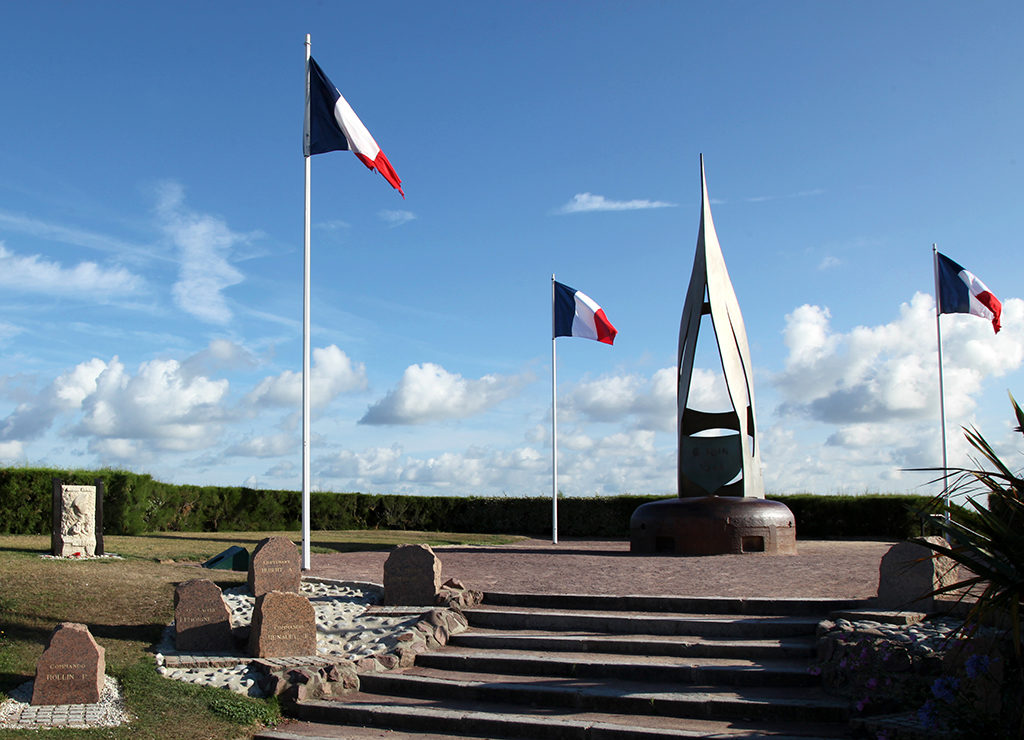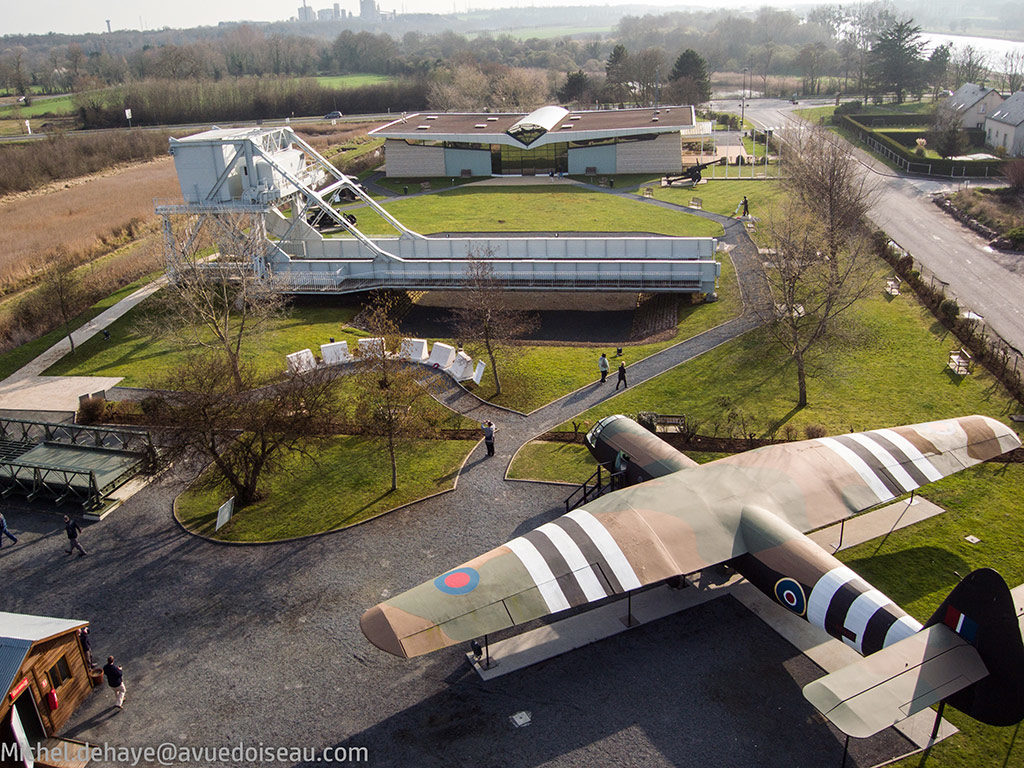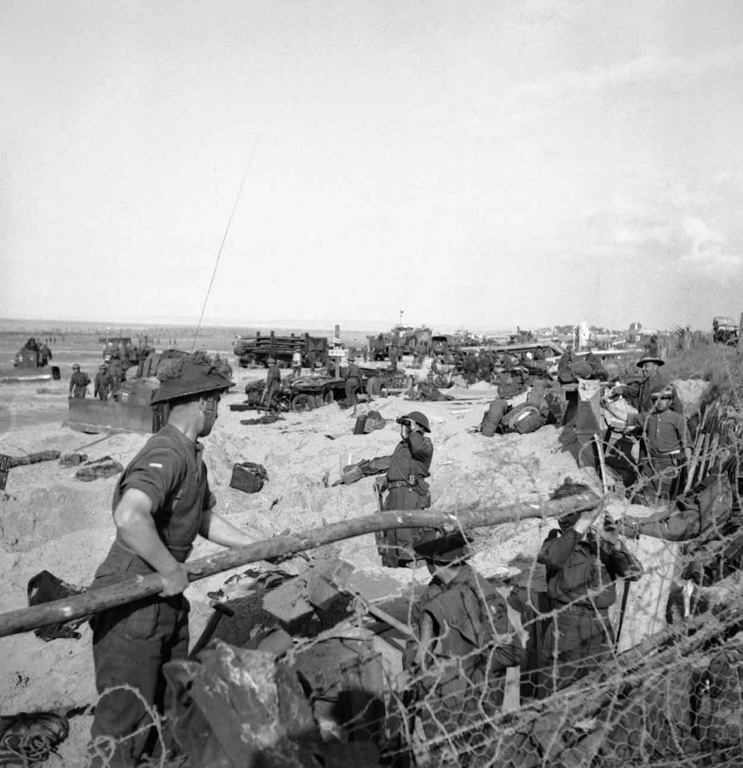
Rough Guides: Travel the Liberation Route Europe is a travel guide dedicated to remembrance sites and itineraries all over Europe.
Order your Rough Guides now!The Commando Kieffer owes its name to a banker born in Haiti who, at the age of 40, decided to join the military. Philippe Kieffer was commander of the sole French unit present in Normandy on 6 June 1944.
Prior to the D-Day landings, the 177 French commandos of Commando Kieffer were trained in Scotland, Wales and England. They departed from Warsash harbor in Portsmouth and landed on Sword Beach in Colleville on D-Day. This itinerary retraces their journey from Portsmouth until the end of the Battle of Normandy. After the battle, only 96 French out of 177 were still fighting alongside the brigade of French commandos.
After the Normandy Campaign, the Commando Kieffer fought in the Netherlands from 1st November 1944. They landed at Vlissingen and participated in the liberation of the islands of Walcheren and Beveland.
The itinerary begins with a day in Portsmouth where you can delve into the history of the preparations for D-Day. Visit The D-Day Story before heading to the Portsmouth Quay House, which acted as the embarkation area headquarters for the Portsmouth sector during the D-Day campaign. It is from there that Commando Kieffer departed for Normandy.
Day 2Travel to Normandy and the area of Sword Beach in Colleville, where Commando Kieffer landed on 6 June 1944 as part of the 1st Special Service Brigade and alongside the British of the 8th Brigade. After the landing, the commandos’ first objective was to capture the German fortified casino in Ouistreham. In Ouistreham, visit the Museum of 4th Commando and take a look at the Monument of the Flame. Both commemorate the actions of Commando Kieffer in WWII.
Day 3Continue with a visit to the German Bunker and the Atlantic Wall Museum in Ouistreham. The museum is located inside the former German headquarters acting as fire control for the batteries covering the entrance of the Orne River and the canal connecting Caen to the sea. It presents a large variety of documents and other items related to the construction of the Atlantic Wall.
Day 4Travel south to Bénouville and Ranville. The next objective of the French commandos was to join with troops of the 6th Airborne Division at Bénouville, and capture the two bridges of the Orne and the canal of Caen. In Ranville you can visit the Memorial Pegasus, which is located in between the two bridges and recalls this operation. Take a break at Café Gondrée, the first café to be liberated, situated at the west end of the bridge.
Day 5Visit the Ranville war cemetery where a large part of the French commandos killed during the Battle of Normandy are buried. Follow the route from Ranville to Sallenelles in direction of Amfreville where the commandos settled in June 1944. Explore the area around Bréville where heavy fighting took place. When the village was liberated on 29 June, it was totally devastated.
Day 6Head east to the village of Bavent, which was liberated without fighting on the last days of July 1944. The main square of the village was renamed “Square Alexandre Lofi” in honour of the assistant commander of Philippe Kieffer, who was also the patron of Troop 8. Visit the churchyard in the centre of the village, where several men of Commando Kieffer are interred.
Day 7Head towards the Dives to follow the route taken by Commando Kieffer from 16 August onwards. Stop by Bassebourg, Brucourt and Angoville where they fought their last battles in Normandy. End the day in the village of Pont-l’Evêque that had just been liberated when the French commandos arrived on 24 August.
From 26 August until 5 September 1944, the commandos were stationed in Saint-Maclou where they learned about the liberation of Paris. Colonel Dawson asked Philippe Kieffer to send 25 of his men to participate in the liberation parade planned for the 1st of September on the Champs-Elysées in Paris.




